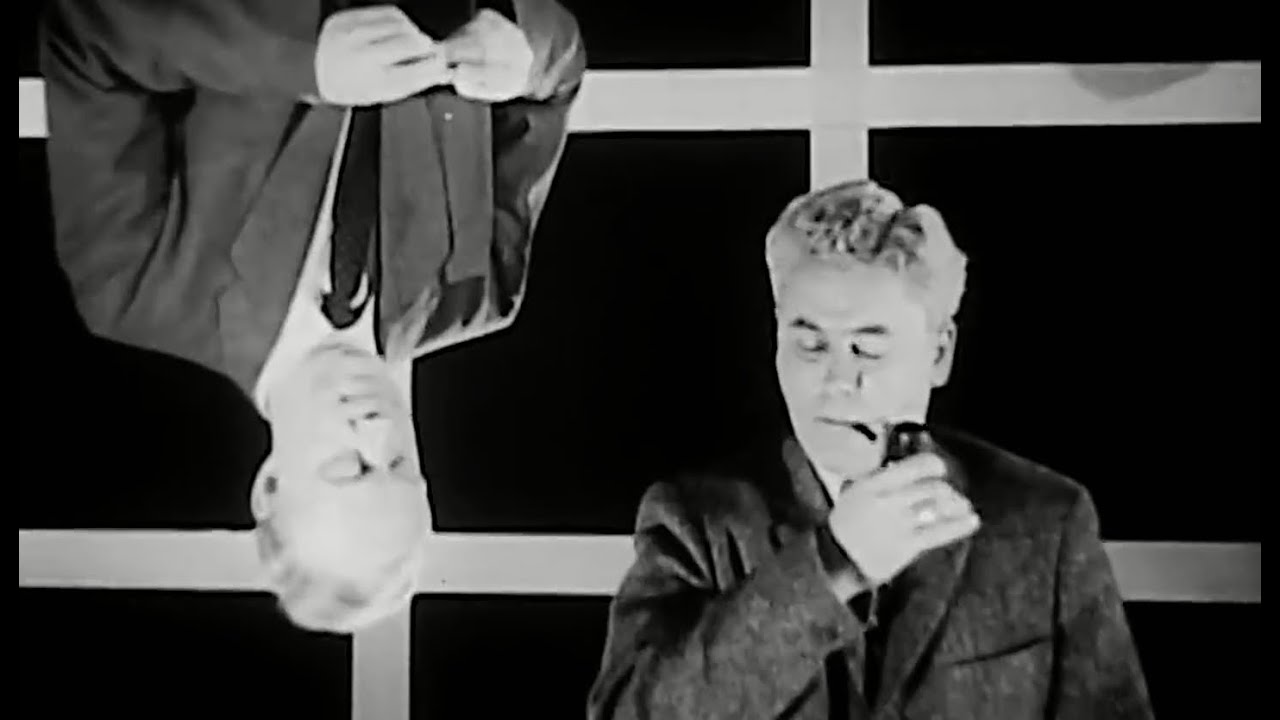Jeff Quitney
Support this channel: https://www.patreon.com/jeffquitney
Physics & Physical Sciences playlist: https://www.youtube.com/playlist?list=PL_hX5wLdhf_JKIMNk88rKCkhpK73_qmHY
more at http://scitech.quickfound.net
‘Uses experiments to show the changes in the appearance of motion as viewed from frames of reference moving relative to one another. Demonstrates how Newton’s law of motion can only be applied to inert and accelerated frames of reference when one applies “fictitious” forces to compensate.’ Your instructors are Professor Patterson Hume and Professor Donald Ivey from the University of Toronto.
Originally a public domain film, slightly cropped to remove uneven edges, with the aspect ratio corrected, and one-pass brightness-contrast-color correction & mild video noise reduction applied.
The soundtrack was also processed with volume normalization, noise reduction, clipping reduction, and/or equalization (the resulting sound, though not perfect, is far less noisy than the original).
https://en.wikipedia.org/wiki/Frames_of_Reference
Wikipedia license: http://creativecommons.org/licenses/by-sa/3.0/
Frames of Reference is a 1960 educational film by Physical Sciences Study Committee.
The film was made to be shown in high school physics courses. In the film, University of Toronto physics professors Patterson Hume and Donald Ivey explain the distinction between inertial and noninertial frames of reference, while demonstrating these concepts through humorous camera tricks. For example, the film opens with Dr. Hume, who appears to be upside down, accusing Dr. Ivey of being upside down. Only when the pair flip a coin does it become obvious that Dr. Ivey — and the camera — are indeed inverted.
The film’s humor serves both to hold students’ interest and to demonstrate the concepts being discussed…
https://en.wikipedia.org/wiki/Frame_of_reference
In physics, a frame of reference (or reference frame) consists of an abstract coordinate system and the set of physical reference points that uniquely fix (locate and orient) the coordinate system and standardize measurements.
In n dimensions, n+1 reference points are sufficient to fully define a reference frame. Using rectangular (Cartesian) coordinates, a reference frame may be defined with a reference point at the origin and a reference point at one unit distance along each of the n coordinate axes.
In Einsteinian relativity, reference frames are used to specify the relationship between a moving observer and the phenomenon or phenomena under observation. In this context, the phrase often becomes “observational frame of reference” (or “observational reference frame”), which implies that the observer is at rest in the frame, although not necessarily located at its origin. A relativistic reference frame includes (or implies) the coordinate time, which does not correspond across different frames moving relatively to each other. The situation thus differs from Galilean relativity, where all possible coordinate times are essentially equivalent…
Source


We all know the earth is a cube and gravity is a lie you're all fools for listening to this clear violation of the cubes teachings.
this was my favorite part of freshman physics
Just fab glad you are preserving these.
My physics teacher showed the class this today
This was so well done, and very clever experiments. Thank you for posting.
Why didn't we have these guys as our teachers in school? I might have ended up as a physicist. Such a great video! Thanks for sharing.
"Your eyes can deceive you. Don't trust them." — Obiwan Kenobi.
Prof. Ivey R.I.P July 2018
Thank you for sharing these!!!!
This is from when Men were Men, an health and safety a far off dream of the nervous 😉 Not even talking about his pipe 🙂
This physisicts are also good actors!
Jeff thank you for improving or cleaning the quality of the audio it really helps understanding this
Relativity. I hope that is relative based on my point of reference! :O) (relatively speaking of course)
Wow. this is a classic. Love the professor hanging upside down to make us understand the relative nature of reference frames.
I love that it's just a guy pushing the turntable around ?
Excellent film !
Lol very cool bet that shut up the flefer you sent here from a comment thread I was reading earlier
what an explanation! wish I could have teacher like them!
god.. the lengths to which they would go to explain you the fundamentals… respect
Todays teachers just sit around on their cell phones all day and hand out "packets" for the kids to do.
concise and thorough .. great presentation by great teachers
Oh gota love that LSD… Simpler times
i'm having to do a paper on this in physics class for school now, thanks :/
☺️
The patriarchy in action.
WOw… superb explanatioN..
Great amazing teachers wish had them as my teachers
isnt the force acting on the ball air resistance?
I can only say this is amazing.
After the circular seeming moving puck was explained, i re-watched it knowing that it was moving in a straight line, trying to convince my senses that the "circle" was a line. ohh my head hurts.
Amazing teachers!
Excellent video Jeff, thanks.